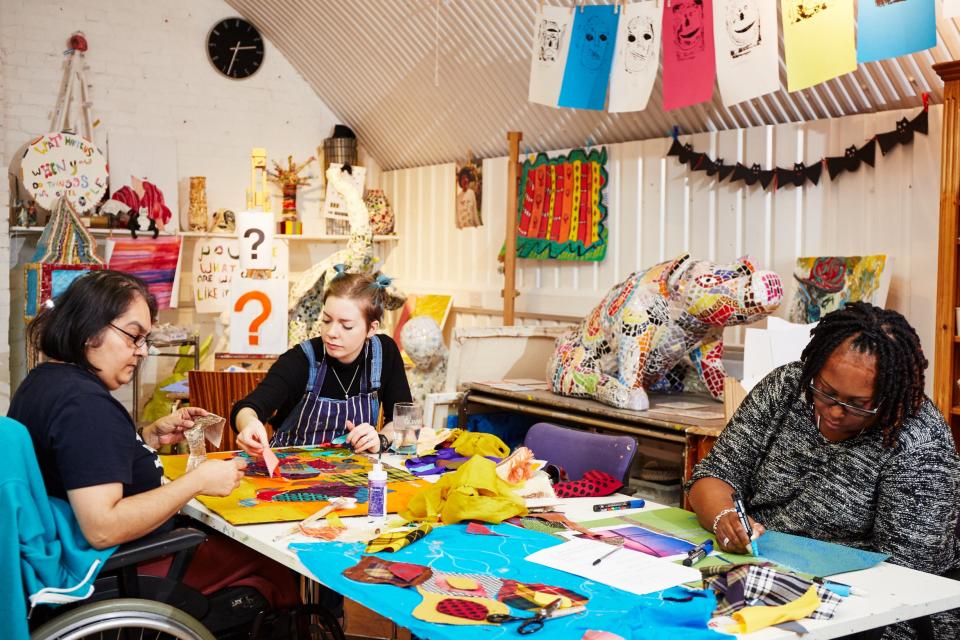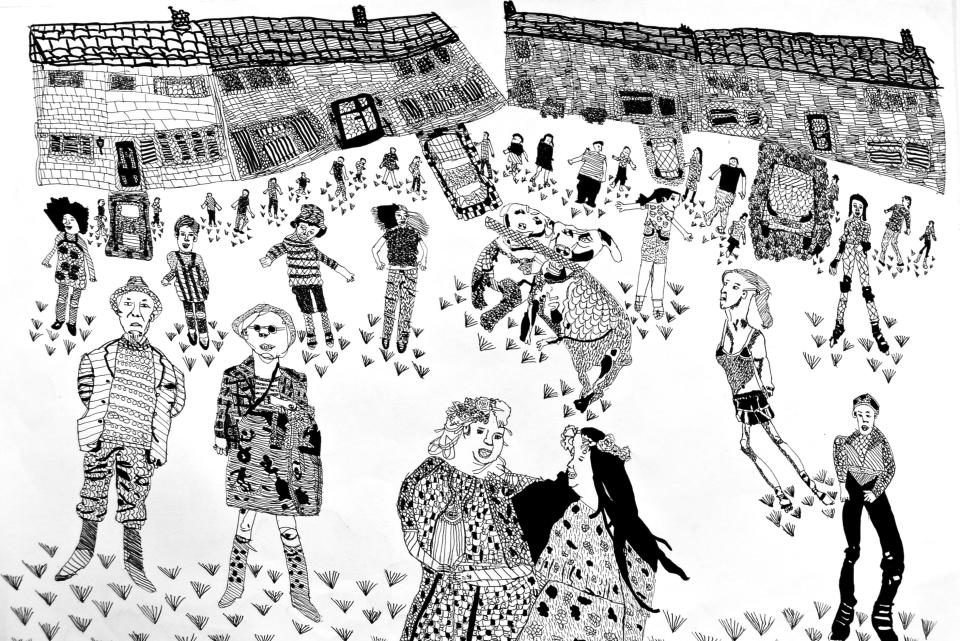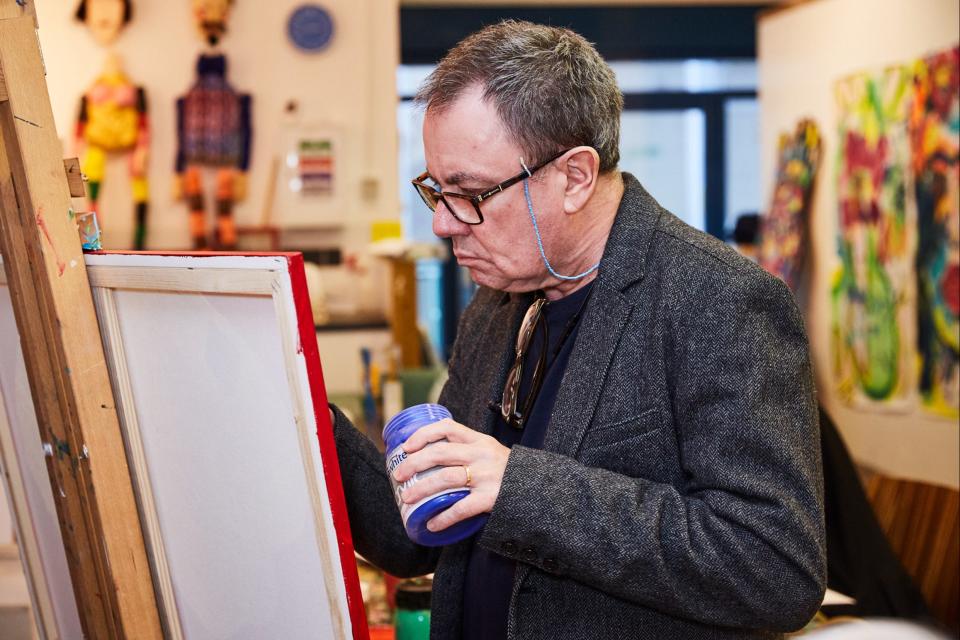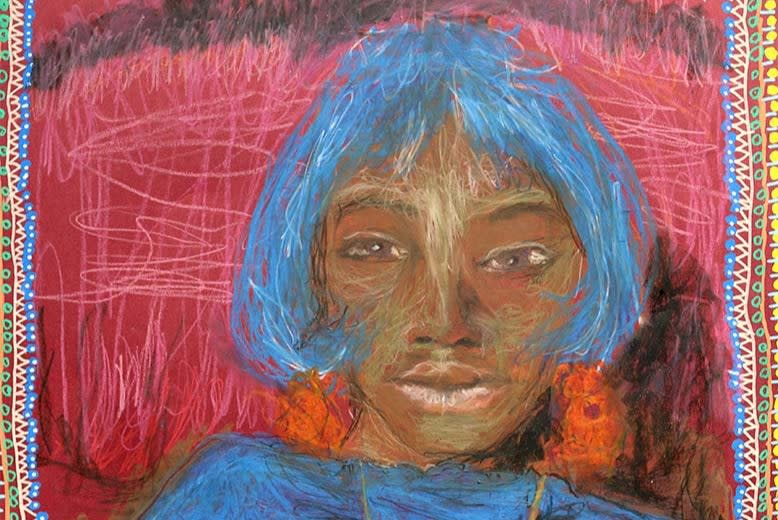How east London studio Submit to Love is helping brain injury survivors to become artists

Submit to Love art studio by Leon Foggit - Sandra, Connie and Tirzah
(Leon Foggit)Beneath the railway arches of east London’s Timber Wharf, under the cocoon of curved white bricks thronging with colourful works that clamour for wall space, is an artists’ collective where pieces fit for the city’s great art spaces grow from even greater adversity.
Submit to Love is a studio of some 40 brain injury survivors who, unable to work since their traumas, have carved new lives for themselves as working artists.
Their art is as diverse as their membership, a group ranging from 20-year-olds to 80-somethings, from all corners of the city. Undefined by their disabilities, they work with passion, tenacity and skill and have exhibited and workshopped at some of London’s biggest galleries and museums, from the Royal Academy to the Tate Modern, the Barbican, Southbank Centre, Wellcome Collection and Science Museum.
When I join the collective on a Zoom session - a weekly addition to their now socially distanced, daily art café hours in Hackney - they are studying the Bauhaus. Each will take inspiration from the candy shop colours and other-worldly geometry of Oskar Schlemmer’s 1920s Triadisches Ballet, chattily considering the images on screen before silence eventually falls, and the scratching of lead against drawing paper and the sweeping away of rubbings is all that can be heard from 15 makeshift home studios on video tiles.

Sam Jevon has developed a unique style
Sam JevonLike most of the artists, Sam Jevon, 52, had not drawn since school when she joined the studio following a car accident, in 2006. “I could only draw matchstick men,” says Sam, who was thrown from the open window of a 4x4 in which she was a passenger, without a seatbelt, leaving her with a brain injury that limits movement and function down her right hand side and blunts her emotions.
Known fondly by collective colleagues as the ‘Queen of Wonky,’ because of her one-eyed vision, the Enfield-based single mother has developed a uniquely recognisable style of intricate black and white line drawings, using ink and nibs of varying thickness to create marks, texture and shade, occasionally punctuated with colour. Two are now in the Wellcome Collection and will feature as part of a planned exhibition there entitled Joy (part of the venue’s On Happiness season, paused by the pandemic). Jevon also exhibited in a 2017 Southbank Centre exhibition called Making Faces and has been privately commissioned too.
She says: “I’ve gained a lot of confidence and pride that the general public can see my work. I like to draw anything as long as it’s detailed - animals, people - David Bowie, Grayson Perry - and scenes. My best is a portrait of Van Gogh.
“You get challenged in the studio. There’s no right or wrong, you can be as creative as you like and get lots of help to realise your own ideas. My young niece and nephew didn’t know me before my injury. They know me as Sam the artist.”
Billy Mann, 61, was a production editor on a national newspaper when he suffered a stroke, at work, in 2012, impairing the left-hand side of his body, his eyesight and mobility. He says: “The studio is like a magical cave of the most wonderful things. It’s a fellowship. The first time I went, I heard good music (Earth, Wind and Fire) and chatter and decided to sit down. I still love that ability to go there, feel it’s ok being yourself and make pictures."

Billy Mann has found “fellowship” at the studio
Leon FoggittBilly prefers working in acrylics on canvas; his first artwork - a psychedelic brain - hangs on the wall of the City home he shares with his wife. Using his production experience, he has also devised methods of wax mono-printing which he has shared through workshops at the Barbican. He says: “When you have a brain injury, you find new processes. I made it part of my art."
Submit to Love operates as part of the brain injury support charity Headway East London, based in the same building, alongside the Regent’s Canal on the busy Kingsland Road. The studio adapts equipment, such as finger brushes, and practices including articulating the ideas of members who communicate only through blinking, for survivors of all abilities, from those living independently to those in round-the-clock care. Many have shared their work online this year as part of Common Threads, a postponed exhibition of embroidered portraiture, including individual and collaborative pieces by 23 Submit to Love artists, now due to open at the neighbouring Autograph Gallery in spring. It will explore otherness and under-representation.
Former photographer’s assistant Affiong, 47, from Islington, who suffered a life-changing fall from a climbing wall 20 years ago, is among the studio members whose pieces will feature. It is the second time her work, which focuses on oil pastel portraits of people and animals, will be shown at the gallery. She says: “Funnily enough I could always draw because both my parents are artists but I didn’t like it at all. It’s only because of Headway that I started drawing again.

A detail from one of Affiong’s drawings
Affiong“At the very beginning of my injury my hearing had completely gone, I was falling around all over the place and in a lot of pain due to my broken spine but art was the one thing I didn’t mind trying over and over again. I didn’t mind if it looked rubbish because I was improving.”
Studio coordinator Alex Brady adds: “After a brain injury, so much is taken away from you including how you see yourself in the world. Through art, you see their confidence restored - they form identities as artists. It is amazing to be there when they start that journey.”
Headway East London is set to lose £88,000 as a result of Covid-19. You can help them to continue their work by making a donation at justgiving.com/headwayelondon

 Yahoo Finance
Yahoo Finance 